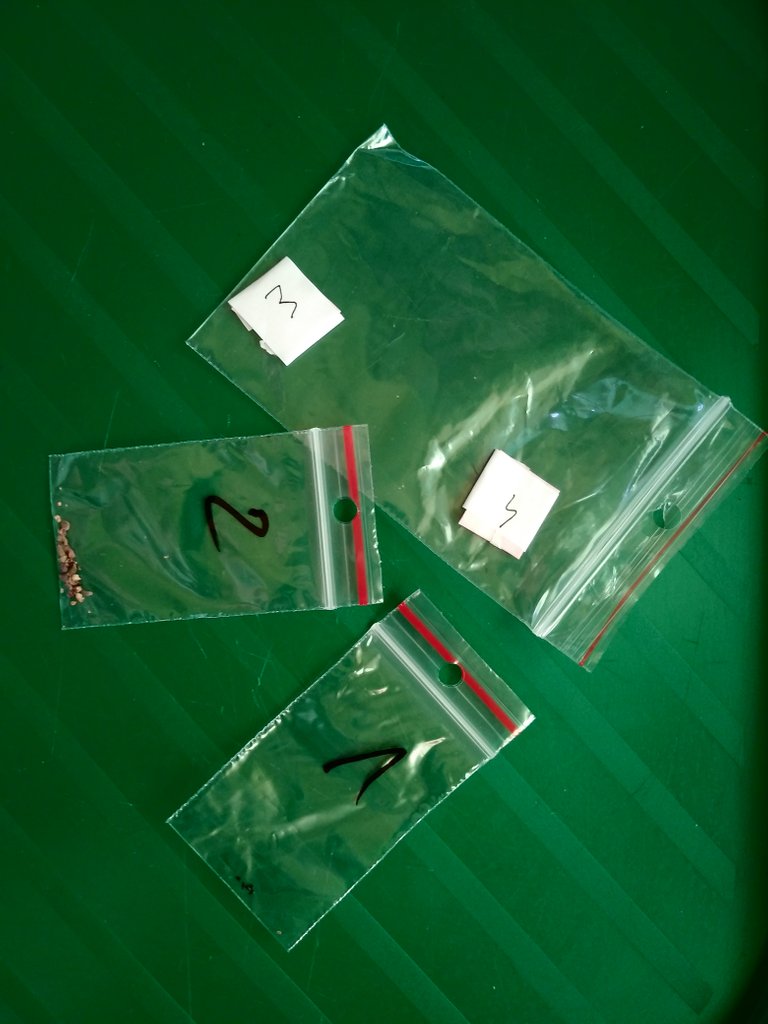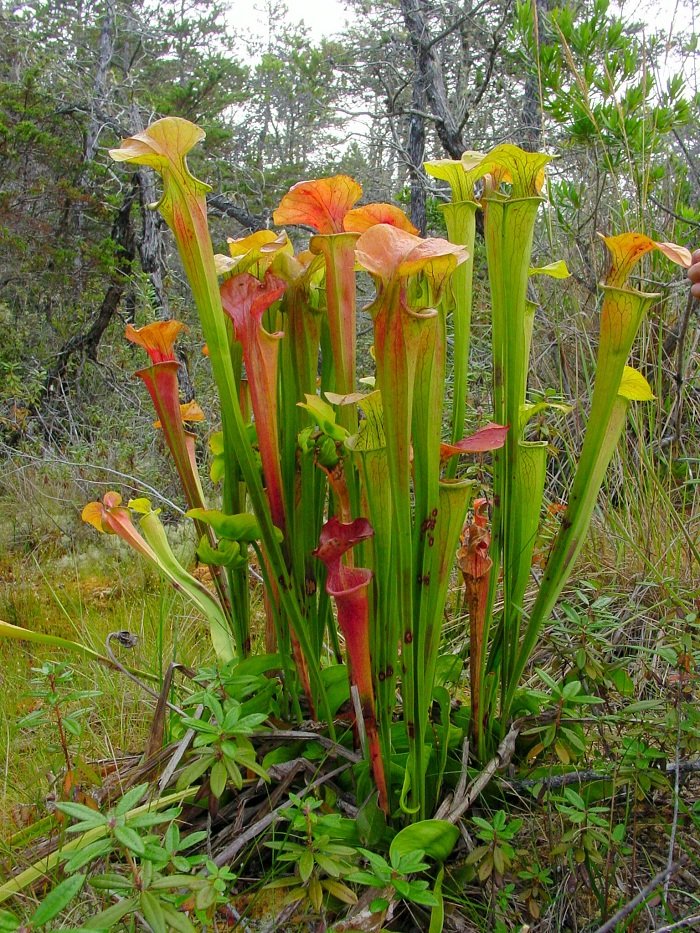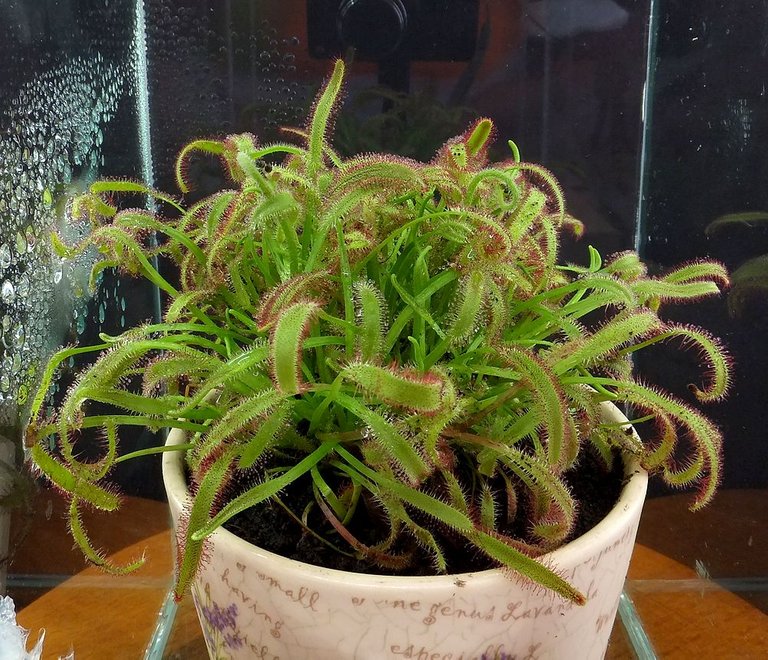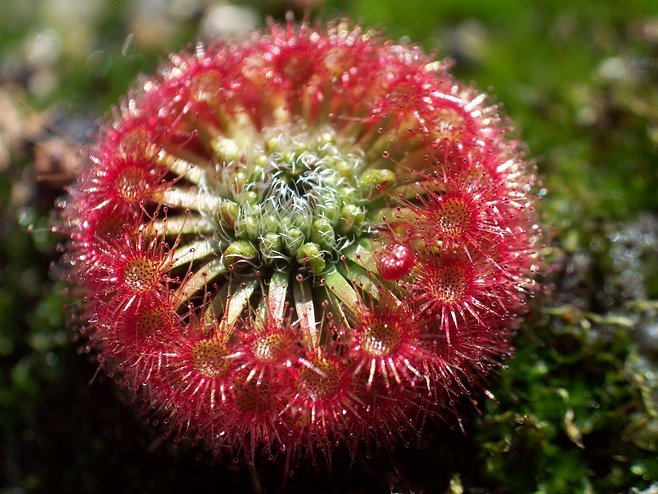Hello to you !
On such hot days that we now have in Poland, man does not want to go out into such a sun and often in the biggest temperatures hide in the shade or cool in the house in front of the windmill. Shelters against the sun are also searched for insects that fly into our homes in large numbers, irritating family members with persistent sounds or painful bites.
I would like to share with you an interesting way how to cope with the scourge of flying insects that use the open windows and doors of our homes. The solution to this problem are insectivorous plants.
Some time ago I found an ad in which various types of plants of this type were sold. I am a fan of interesting ideas so I did not think about buying for a long time.
In addition to the fact that the plants will help me to cope with insects, they have an exotic look to it and attract their eyes with their bright colors.

In the picture of the seed right after unpacking the package, most are very small and easily damaged. Currently, they are already from a few seeds are already in cups with soil and I wait patiently until they start to germinate.
I hope that in a while I will be able to show you photos of mature plants ready to fight insects. 💀
Below I present brief descriptions of the genres I bought:
- American Flycatcher (Dionaea Muscipula)

Carnivorous perennial. Natural habitat: marsh areas with poor soil in nutrients. If the potential victim hits one of the hairs twice on the trap leaves, or individually two others at an interval of less than about half a minute, the trap closes in a time usually shorter than 1 second. The plant begins the secretion of digestive enzymes. Digestion lasts for several days, depending on the size of the victim. When this process is completed, the trap opens and waits for the next insect (the number of trap closures is limited to around 2-4, sometimes to 1). If the trap is no longer suitable for catching prey, it withers, and in its place quickly grows new.
- Kapturnica (Nepenthes) Saracenia

Jugular leaves up to 1 m in length. They are so-called trap leaves containing digestive substances or bacteria supporting the decomposition of organic substances. They attract the victims with the smell (nectar). Lured insects are drowned in rainwater that usually fills the interior of a trap leaf. Flowers large, yellow, white, green or red, with pistils with a characteristic, umbrella-like appearance. These posts protect the stamens beneath them.
- Cape Sundew (Drosera Capensis)

Perennial, insectivorous plant. Natural habitat: peat bogs, wetlands.
Self-pollinating flowers. The leaves give off a sticky, luring liquid, to which they stick
insects. Later, the leaves curl up and digest the prey, which provides the plant
nitrogen compounds in which the plant's natural environment is poor.
- Rosatka Łyżeczkowata (Drosera Spatulata)

Perennial. It grows naturally on peat bogs and wetlands.
Her trap leaves have glandular hairs attracting the victim, the trap is curled up
measure and digest prey for one to two weeks.
Source: auction in the allegro.pl site of the user imbupuma from whom I bought seeds
Source graphics: wikipedia.org
Excellent article. I learned a lot of interesting and cognitive. I'm screwed up with you, I'll be glad to reciprocal subscription))